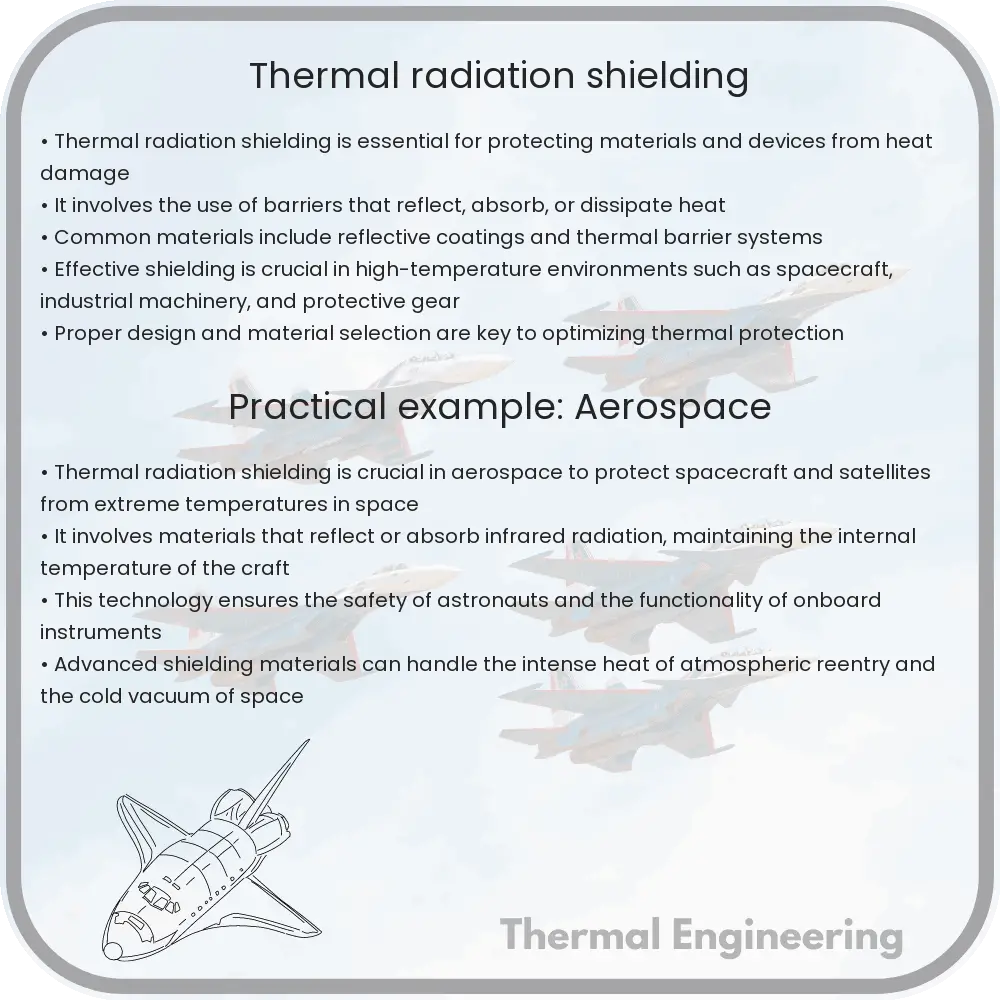Learn about thermal radiation shielding, its function, effectiveness, materials used, and applications across various engineering sectors.

Understanding Thermal Radiation Shielding in Engineering
Thermal radiation shielding is a critical aspect of engineering, specifically used to protect systems and structures from excessive heat, particularly in extreme environments such as aerospace, nuclear reactors, and industrial processes. This article will explain the basics of thermal radiation, how thermal radiation shields work, and their applications in various engineering fields.
What is Thermal Radiation?
Thermal radiation is a form of heat transfer that occurs through the emission of electromagnetic waves, primarily in the infrared spectrum. All bodies at a temperature above absolute zero emit thermal radiation. The rate of this emission, and thus the intensity of the radiation, increases with the temperature of the body. The Stefan-Boltzmann law quantifies this relationship:
E = σT4
where E is the energy radiated per unit area, T is the absolute temperature in kelvins, and σ (the Stefan-Boltzmann constant) is approximately 5.67 x 10-8 W/m2K4.
How Do Thermal Radiation Shields Work?
Thermal radiation shields function primarily by reflecting radiant heat away from the protected area or object. The effectiveness of a thermal shield depends on factors such as the shield’s material properties, including its emissivity and reflectivity, and its configuration in the insulation system.
Materials with low emissivity and high reflectivity are ideal for thermal shielding. These materials can reflect a significant portion of the incoming radiation while emitting very little of the radiation they absorb. Common materials used include aluminum foil, which has high thermal reflectivity, and special coatings designed to minimize emissivity.
Applications of Thermal Radiation Shielding
- Aerospace: In spacecraft, thermal radiation shields protect sensitive components from the extreme temperatures of space, which can vary drastically when the spacecraft is exposed to the sun versus when it is in the Earth’s shadow.
- Automotive: Thermal barriers are used in cars to protect components and passengers from heat generated by the engine and exhaust systems.
- Building Construction: Radiant barriers are installed in buildings, typically in attics, to reduce cooling costs by reflecting heat away from the living spaces.
- Protective Clothing: Firefighters and industrial workers wear suits with thermal radiation shielding to protect against high temperatures during their operations.
Challenges and Innovations
One of the main challenges in thermal radiation shielding is maintaining performance under extreme conditions for prolonged periods. Materials can degrade due to high temperatures, mechanical stress, or environmental factors. Innovation in material science, including the development of new composites and nanomaterials, is key to improving the durability and effectiveness of thermal shields.
In conclusion, thermal radiation shielding is a crucial technology in many sectors of engineering, providing safety and efficiency in environments exposed to high temperatures. Continued advances in materials science and engineering will further enhance the capabilities and applications of thermal radiation shielding in the future.